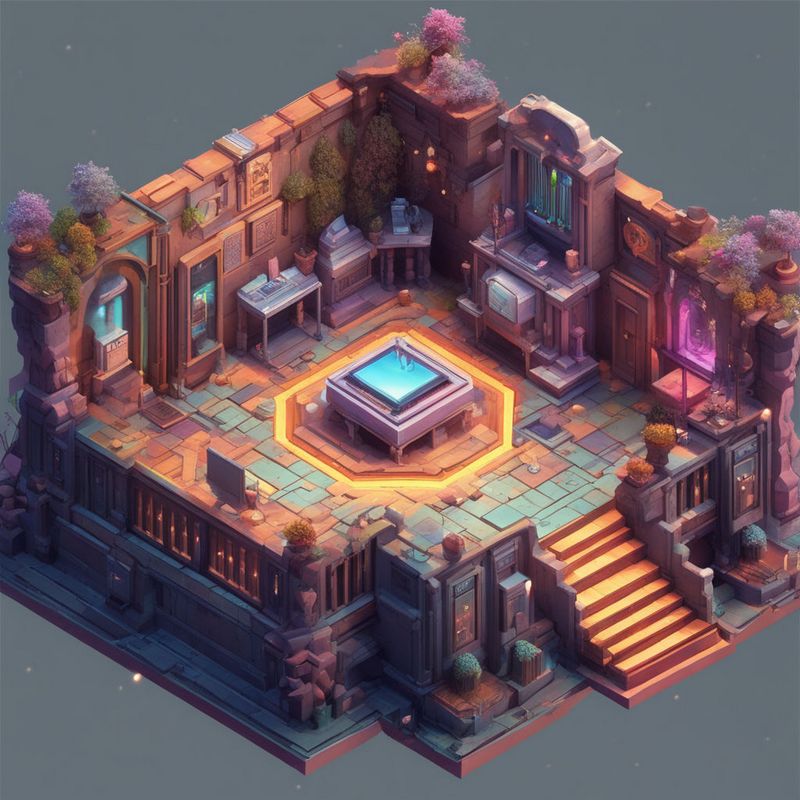Designing Day/Night Cycles That Affect Mechanics

In the world of video games, day and night cycles have become a popular way to add depth and immersion to gameplay. By simulating the passage of time within the game world, developers are able to create dynamic environments that change based on the time of day. However, designing day/night cycles that not only affect the visual aesthetics but also impact gameplay mechanics can take the gaming experience to a whole new level.
One of the main reasons why developers choose to incorporate day and night cycles into their games is to create a sense of realism and immersion. By having the game world evolve as time passes, players can experience a more dynamic and living environment. For example, during the day, players may encounter different types of wildlife or non-player characters going about their daily routines. Conversely, at night, the same areas may become more dangerous as nocturnal creatures emerge and visibility decreases.
But beyond just adding realism, day and night cycles can also be used to affect gameplay mechanics in meaningful ways. For instance, certain quests or events may only be available at specific times of the day or night. This encourages players to pay attention to the passage of time and plan their actions accordingly. Additionally, changing enemy behavior based on the time of day can add a new layer of challenge to combat encounters. For example, some enemies may be weaker during the day but stronger at night, forcing players to adapt their strategies and playstyles.
In open-world games, day and night cycles can also influence the game world itself. For instance, some areas may be safer to explore during the day, while others become more dangerous at night. Weather conditions can also vary based on the time of day, affecting visibility and traversal options. By tying these environmental changes to the day/night cycle, developers can create a more dynamic and immersive world for players to explore.
When designing day and night cycles that affect gameplay mechanics, it’s important to strike a balance between realism and fun. While it may be tempting to make night time significantly more challenging than daytime, it’s crucial to ensure that players still feel engaged and motivated to explore the game world. Ideally, the day/night cycle should enhance the overall gaming experience without becoming a frustrating or tedious obstacle for the player to overcome.

One way to achieve this balance is by offering meaningful incentives for players to explore and engage with the day and night mechanics. For example, rare items or resources may only be found at specific times of the day, encouraging players to actively seek out these opportunities. By rewarding players for engaging with the day/night cycle, developers can make it a more integral part of the gameplay experience rather than just a superficial visual effect.
Another key consideration when designing day and night cycles that affect mechanics is to ensure that the changes feel organic and seamless within the game world. Sudden shifts in difficulty or behavior based on the time of day can feel jarring and disrupt the player’s immersion. Instead, developers should strive to create gradual transitions that feel natural and enhance the overall atmosphere of the game.
In addition to affecting gameplay mechanics, day and night cycles can also be used to enhance storytelling and thematic elements within a game. For example, the passage of time can be used to underscore modded mc server hosting themes of hope and renewal as the world awakens each morning, or to highlight themes of mystery and danger as darkness falls. By using the day/night cycle as a storytelling tool, developers can create a more immersive and emotionally resonant experience for players.
From a technical perspective, implementing day and night cycles that affect mechanics requires careful planning and attention to detail. Developers must consider factors such as lighting effects, AI behavior, and environmental changes when designing these systems. Additionally, optimizing performance to ensure smooth transitions between day and night can be a challenge, especially in open-world games with large and dynamic environments.
In conclusion, designing day and night cycles that affect gameplay mechanics can add depth, immersion, and challenge to video games. By creating dynamic environments that change based on the time of day, developers can offer players a more engaging and interactive experience. From influencing enemy behavior to shaping the game world itself, the possibilities for incorporating day and night cycles into gameplay are endless. With careful planning and attention to detail, developers can create a truly immersive and memorable gaming experience that seamlessly blends the visual and mechanical aspects of the day/night cycle.
